#geomagnetic storm
Text
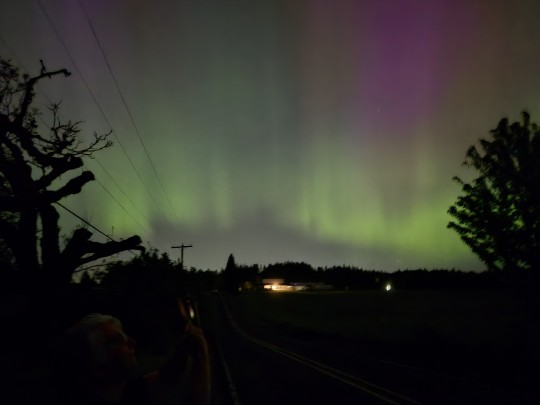
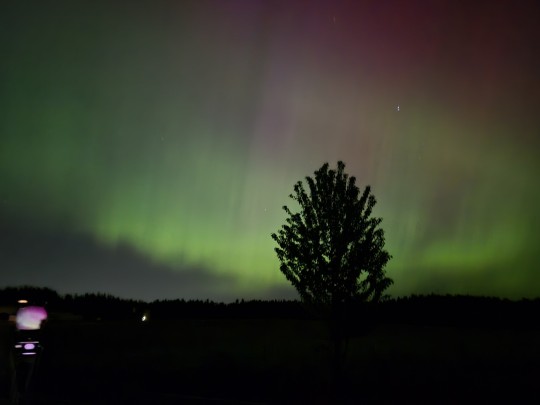
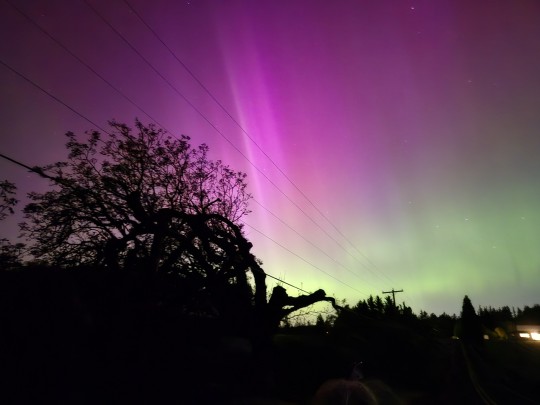
Pacific northwest. INSANE geomagnetic storm!!!
Never thought I'd see aurora borealis right at home. Woagh.
#aurora borealis#coronal mass ejection#geomagnetic storm#space weather#holy fucking shit. holy fucking shit. holy gu
40 notes
·
View notes
Text
Stunning northern lights captured over Mont Saint-Michel on May 10-11, 2024.
📹: 𝑀𝑎𝑡ℎ𝑖𝑒𝑢 𝑅𝑖𝑣𝑟𝑖𝑛 / Tous Droits Réservés
#northern lights#aurora#aurora borealis#Mont Saint-Michel#solar storm#geomagnetic storm#solar flare#solar outburst
35 notes
·
View notes
Text
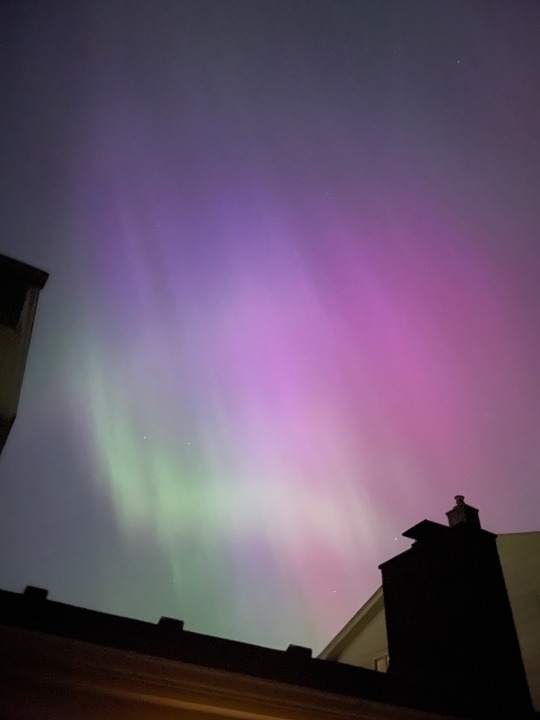
There is an enormous geomagnetic storm hitting the earth tonight. Aurora borealis is appearing at lower latitudes than usual. I am below the 45th parallel (northern hemisphere) and I took this photo in my backyard a few minutes ago. This is a 3 second exposure that is brighter than it appeared in real life, but the shapes and colors were clearly visible after waiting about 15 minutes for the aurora to brighten.
I cannot recommend enough that if you’re able to and the sky is clear, you go outside and look at the sky tonight! Look towards whichever pole is nearest (north or south) and watch for a few minutes! Look for pink or green glow, or long streaks. If it’s faint, try taking a picture with multiple seconds of exposure to confirm that you’re seeing aurora. Here’s another one I took earlier when I wasn’t sure if i was imagining a pink tinge to the sky:
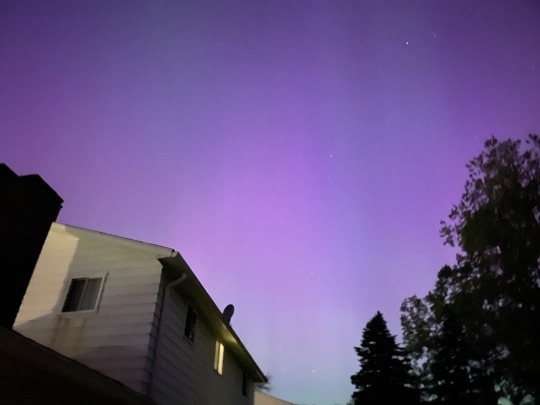
It was SO cool to see the northern lights from my backyard. Absolutely worth running outside in my pajamas to try and spot it. Now’s your chance!
#aurora#geomagnetic storm#stargazing#stars has thoughts#if you think you're too far south: apparently there have been aurora sightings in Florida#this is the biggest solar event like this in a few decades it sounds like!!
21 notes
·
View notes
Text
Even american south may be able to see some, if we use our cellphone cameras!
nice.
#news#aurora borealis#geomagnetic storm#cat 4#also probably some power outages#eh#if it turns out worse and ends up world ending i lived a good life#it won't tho so no worries#hopefully it wrecks debt collector servers i'd love that#“oh you owe 30k in college loans? not anymore the sun wiped it”
335 notes
·
View notes
Text
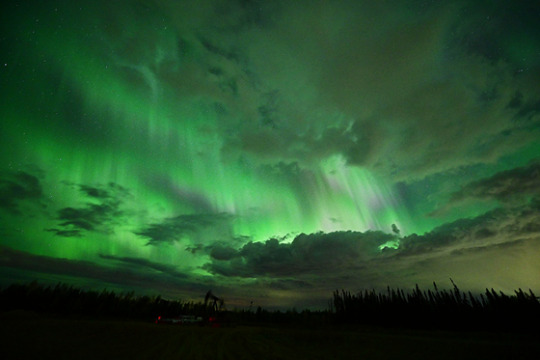
Autumn aurora
A geomagnetic storm popped up very quickly and resulted in some beautiful Aurora that pulsated faster than I've ever seen before, and some cloud cover provided some nice contrast and depth
Taken By Jo Majko
#jo majko#photographer#canadian geographic#landscape#autumn#aurora borealis#nature#geomagnetic storm
90 notes
·
View notes
Text

We still have our eclipse glasses, so my partner held them over his phone camera and used the zoom lens to get a blurry shot of the Carrington Event-sized sunspots.
#sunspots#coronal mass ejection#cme#geomagnetic storm#solar flare#the sun#space weather!#astronomy#space
22 notes
·
View notes
Photo


Sixty years ago today, the US military accidentally created a strong geomagnetic storm, the result of a nuclear test called "Starfish Prime." The blast sparked auroras over Hawaii and led to the early demise of all satellites in Earth orbit at the time.
Spaceweather.com has the complete story!
If you’re worried you might have fucked something up let me assure you that you have not fucked up this badly. you’re gonna be okay
#space#auroras#space weather#geomagnetic storm#starfish prime#news#NEAT#also DUMBASSES#goodbye satellites
328 notes
·
View notes
Text
for anyone who doesn't know, there is a G4 (severe) class geomagnetic storm happening now !!! the CME that impacted earth today is the first of six (or seven? i heard both numbers) which will continue to impact throughout the weekend. aurora borealis have the potential to be visible as south as alabama and northern california !!
this is the first G4 (severe) class warning since 2005 (for reference, there are only 5 classes)!! on the NOAA's site it looks like the KP index (used to characterize the magnitude of geomagnetic storms) is over 8, nearly 9 right now which is the highest the scale gets : D
if you have clear skies, get out there tonight and look!!! areas with little light pollution are best!! YAY !!!!!
#im a huge astronomy nerd but am not a professional astronomer or anything so if u know better than me PLS correct me on any of this info#IM SO STOKED !!!!! if i see auroras tonight (my number 1 dream in life) i will be happier than ever#my text#space#solar storm#geomagnetic storm
8 notes
·
View notes
Text

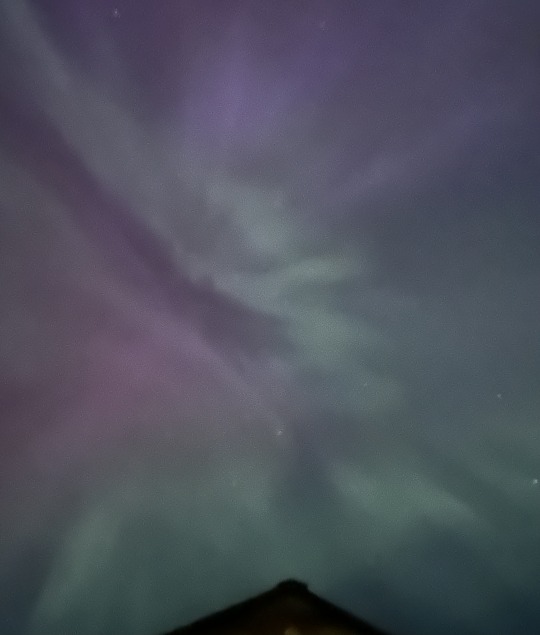
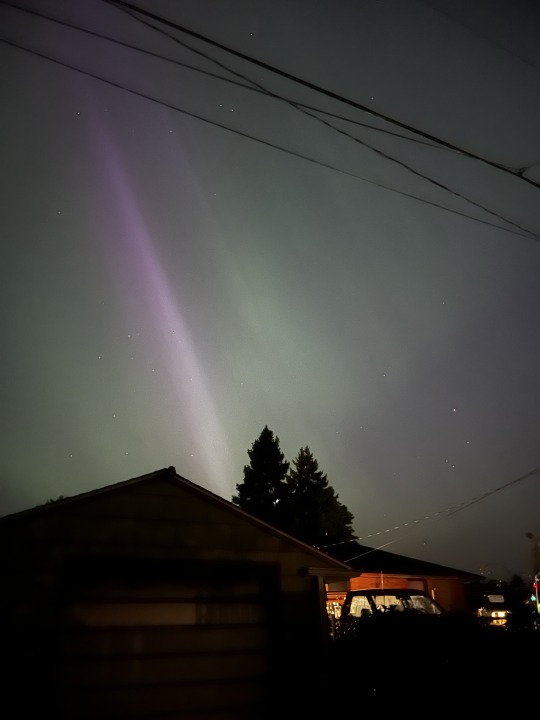
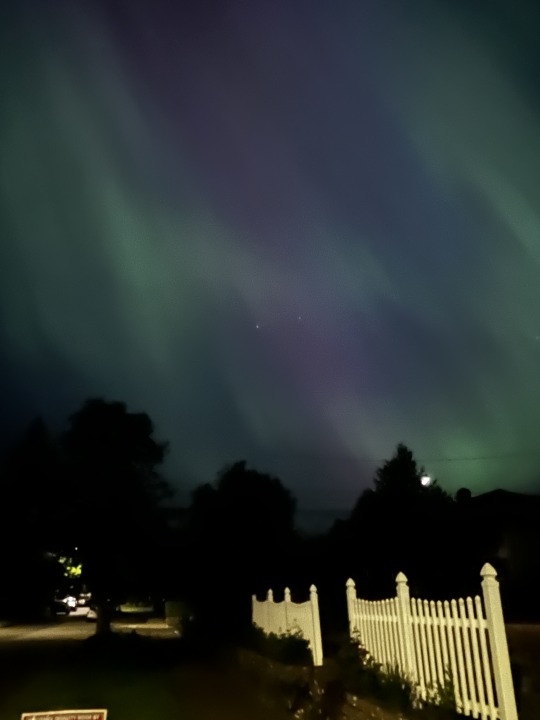


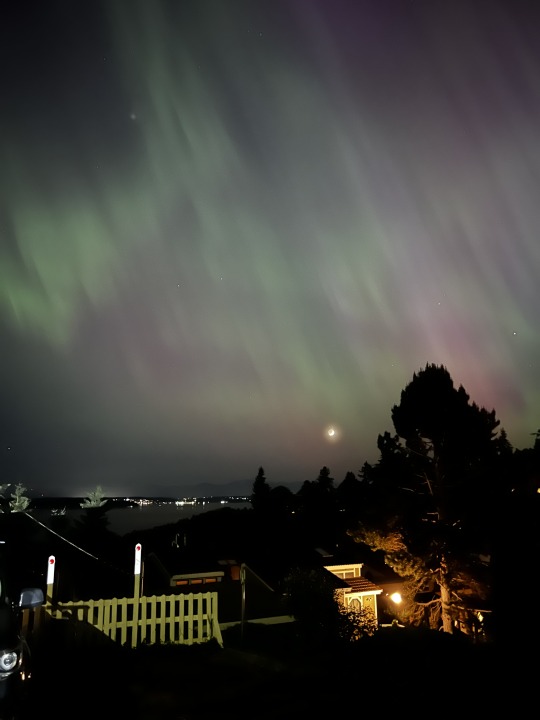
Aurora borealis, Seattle, May 10, 2024
5 notes
·
View notes
Photo
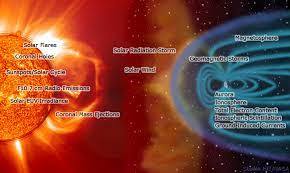

Scientists report ‘benchmarks’ for extreme space weather High-energy ‘relativistic’ electrons - so-called “killer” electrons - are a major source of radiation damage to satellites and so understanding their patterns of activity is crucial. Bursts of charged particles and magnetic fields from the Sun can tear open the Earth’s magnetic field, giving rise to geomagnetic storms. During these events the number of killer electrons in the outer radiation belt can increase by orders of magnitude and become a significant space weather hazard. Dr Nigel Meredith of BAS led an international team who analysed 20 years of data from a US GPS satellite to determine the 1 in 10, 1 in 50, and 1 in 100-year event levels. A 1 in 100-year event is an event of a size that will be equalled or exceeded on average once every 100 years. Satellite operators, manufacturers, insurers, and governments need to prepare and mitigate against the risks posed by these electrons. Society is increasingly reliant on satellites for a variety of applications including communication, navigation, Earth observation and defence. As of April 2022, there were 5,465 operational satellites in Earth orbit, and most are exposed to energetic electrons for at least some of their orbit. In 2021, the overall global space economy generated revenues of $386 billion, an increase of four percent compared to the previous year. Dr Nigel Meredith, space weather scientist and lead author of the study says: “The 1 in 100 year event levels reported in this study are important for industry and government. They serve as benchmarks against which to compare other extreme space weather events and to assess the potential impact of an extreme event.” These findings are vitally important to the satellite industry as engineers and operators require realistic estimates of the largest electron fluxes encountered in GPS orbit to prepare for the impacts of these extreme events and to improve the resilience of future satellites. The findings are essential for satellite insurers to help them ensure satellite operators are doing all they can to reduce risk and to evaluate realistic disaster scenarios The difference between the 1 in 10 year and 1 in 100-year event varies depending on the energy of the electrons and the distance from Earth. These differences are largest at the highest energies furthest from the planet, varying between a factor of 3 and 10 for some of the highest electron energies over 35,000 km from the Earth’s surface. Such substantial increases could pose a significant additional risk to satellites operating in this region. Like weather on our planet, space weather can vary greatly over minutes, days, seasons and the 11-year solar cycle. The researchers found that the majority of these killer electron events occurred during the solar cycle’s declining phases — seen twice during the 20-year period they studied — but the largest event was elsewhere, showing that extreme events can happen at any time. Professor Richard Horne, FRS, from BAS and a co-author on the study, says: "The space sector is part of our Critical National Infrastructure. This research will help us assess the resilience of satellites to a severe space weather event." Severe space weather was added to the UK National Risk Register of Civil Emergencies in 2011. The impacts of space weather on satellites can range from momentary interruptions of service to total loss of capabilities. In 2003 a major storm caused 47 satellites to experience anomalies, over 10 to be out of action for more than a day and one was a complete loss. Extreme Relativistic Electron Fluxes in GPS Orbit: Analysis of NS41 BDD-IIR Data by Nigel P. Meredith, Thomas E. Cayton, Michael D. Cayton, Richard B. Horne is published in the journal Space Weather
14 notes
·
View notes
Text
We could see the northern lights tonight from the geomagnetic storm. It was incredible; beautiful and unreal. I'd never seen them before. I ended up in tears because I remembered how after I beat cancer I made a bucket list and "see the northern lights" was on it, and there I was, standing on the mountain with my best friend and my dog, watching them in real life. I hope I remember that forever.
3 notes
·
View notes
Text
And here wo go again with geomagnetic storms and anxiety being out of the roof and chest hurting like shit.
4 notes
·
View notes
Text

CME strikes Earth as more leave the sun
The awaited coronal mass ejection (CME) from May 7 struck Earth at 23:59 UTC on May 9. A G1 (minor) geomagnetic storm followed. NOAA forecasters anticipate up to a G2 (moderate) geomagnetic storm today, continuing into the early hours of May 11. This may bring auroral displays to the northern U.S. Good luck, aurora-chasers! Read the sun news.
3 notes
·
View notes
Photo

Tunguska meteorite and CMEs solar mass ejection 2020
‘’If we assume that, for some reason, the coronal ejection mass did not dissipate on the way from the Sun to the Earth (for example, part of the ejection flew, or assume that it is quark matter), then a deceleration of the coronal ejection hunch will occur in the Earth's atmosphere, and a thermonuclear reaction will begin... That is, we will get a thermonuclear explosion. The braking energy will be sufficient to overcome the Coulomb barrier. According to calculations, the mass of solar plasma should be in the range of 250 - 300 kg. The power of such a thermonuclear explosion will correspond to the power of the explosion of the Tunguska methiorite (the mass defect is 7 %, therefore we get about 300 kg). In a thermonuclear explosion, pollution will be only heavy elements from the solar plasma, which is actually observed in the area of the explosion. In general, the explosion of the solar plasma can explain all the concomitant phenomena of the Tunguska’’
https://archive.org/details/tunguska-5/mode/2up
9 notes
·
View notes
Text

Aurora borealis, May 11, 2024, Puget Sound, Washington
3 notes
·
View notes